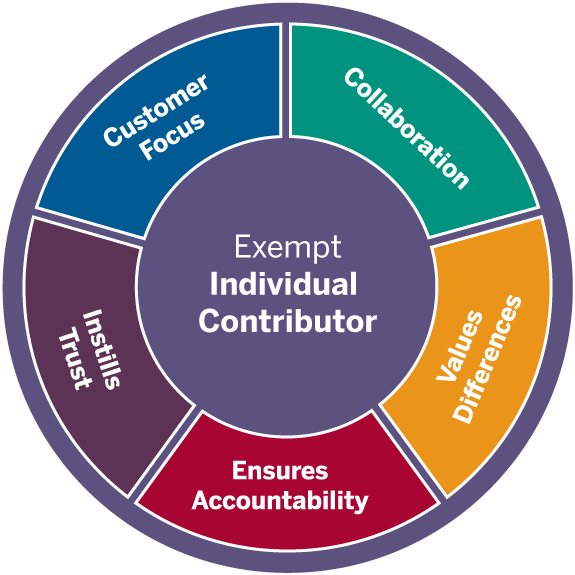Exempt Individual Contributor: Expert
Courage
Stepping up to address difficult issues, saying what needs to be said
Courage involves being comfortable with the conflict that is inherent to being a champion of an idea or course of action. To say what needs to be said at the right time, to the right person, in the right manner to effect change. Many times it’s not positive. Courage involves letting people know where you stand, having difficult conversations, and even standing alone. Being courageous requires your brain to balance fight or flight instincts with logical analysis. It involves weighing the drawbacks of addressing tough issues. Having courage does not mean you are not afraid. Courage means you overcome the fear to do what is right.
You show this competency when you:
- Readily tackle tough assignments
- Face difficult issues and supports others who do the same
- Provide direct and actionable feedback
- Are willing to champion an idea or position despite dissent or political risk
How to develop this competency:
Face criticism with courage
Leading is riskier than following. While there are a lot of personal rewards for taking tough stands, it puts you in the limelight. People who choose to stand alone have to be internally secure. Don’t let criticism prevent you from taking a stand. Build up your heat shield. If you know you’re right, standing alone is well worth the heat. If it turns out you are wrong, admit it and move on.
Deliver a direct message
Be succinct. You have a limited attention span in tough feedback situations. Don’t waste time with a long preamble. If your feedback is negative the recipient is likely to know it, go ahead and say it directly. Keep it to the facts: no passion or inflammatory language. If feelings are involved for you, wait until you can describe them, not show them. People with courage take action to find a better outcome, not to destroy others. Stay calm and cool.
Bring a solution if you can
Nobody likes a critic. Everybody appreciates a problem solver. Don’t just point out problems, suggest potential solutions. Give people ways to improve. Tell others what you think would be better: paint a different outcome. Help others see the potential consequences. Start a discussion.
Learn more:
- Book: Dare to Lead: Brave Work, Tough Conversations, Whole Hearts by Brene` Brown
- Book: The Courage Habit: How to Accept Your Fears, Release the Past and Live Your Courageous Life by Kate Swoboda
- Article: What’s Courage Have to do with Leadership
- LinkedIn Learning: Courage course collection

Exempt Individual Contributor
